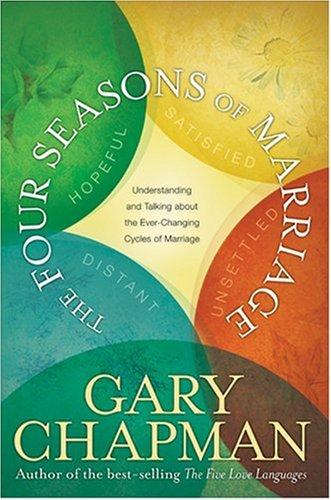The Four Seasons of Marriage
The Four Seasons of Marriage
Couldn't load pickup availability
The Four Seasons of Marriage
Gary Chapman's "The 4 Seasons of Marriage" explains the typical long-term relationship trajectory for couples by identifying four distinct and recurring seasons that marriages go through: the Season of Love, the Season of Commitment, the Season of Accommodation, and the Season of Renewal. This framework suggests that, much like the natural seasons, marriages are perpetually in a state of transition, moving from one season to another throughout their life together.
Here's how each season contributes to the understanding of a long-term relationship's trajectory:
- The Season of Love: This season typically occurs in the initial 0-3 years of marriage and is characterized by intense romance and excitement. Couples in this stage may experience conflicts over minor issues but also have significant opportunities for growth and connection. This marks the beginning of the marital journey, filled with new experiences and deepening affection.
- The Season of Commitment: Spanning approximately years 4-10, this season is defined by a deeper sense of commitment and loyalty. Couples in this phase become more accustomed to each other's habits and quirks and begin to build a strong foundation for their relationship. This stage signifies a move beyond initial romance towards a more stable and dependable partnership.
- The Season of Accommodation: Typically lasting from years 11-25, this season involves greater understanding and acceptance. Couples learn to compromise and find ways to meet each other's needs, even when disagreements arise. This stage highlights the ongoing adjustments and adaptations necessary for a long-term partnership to thrive.
- The Season of Renewal: Beginning around age 40 or older, this season is a time for reflection and rejuvenation. With more shared life experience, couples can look back on their years together with pride and gratitude. This stage often involves a renewed focus on the relationship after perhaps raising children or navigating career peaks.
Chapman argues that each season presents unique challenges and opportunities for growth. By recognising these patterns, couples can gain insight into their current emotional landscape and understand why they might be feeling certain ways at different times. This understanding allows them to take proactive steps to address underlying issues and strengthen their bond.
The model emphasizes that this cycle of seasons repeats itself throughout the life of a marriage. A marriage might move from the warmth of summer (feeling comfortable and relaxed) to the chill of winter (feeling discouraged and detached), and then back to the hopefulness of spring. Therefore, the long-term trajectory is not necessarily a linear progression but rather a cyclical journey through these different emotional states and relational dynamics.
Ultimately, Chapman's framework suggests that by understanding these recurring seasons and learning how to navigate the challenges and opportunities within each, couples can build a stronger foundation for a happy and lasting marriage. The book aims to provide a common language for couples to discuss their relationship and offer practical strategies to enhance their connection in every season.
Share
People also searched for
- British English Dictionaries
- Christian Life
- Creating a love-based approach to parenting
- English
- Gary Chapman
- How to navigate the challenges of each season of marriage
- How to understand and manage conflicts in a long-term marriage
- Interpersonal Relations
- Life
- Marriage
- marriage and relationships
- Navigating the challenges of co-parenting as a couple
- Prioritizing your relationship with your spouse during different stages of life
- Season of Accommodation
- Season of Commitment
- Season of Love
- Season of Renewal
- Strategies for building intimacy and emotional connection in a married relationship
- Understanding the different seasons of marriage
- using principles from The 4 Seasons of Marriage




